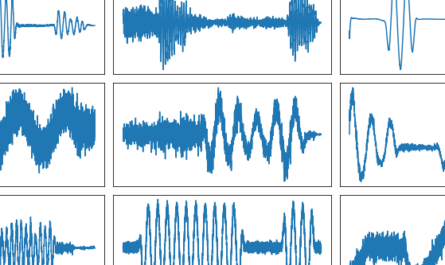The shortwave spectrum from 3 to 30 MHz holds radio signals from all over the world. Here is a compact overview of the most commonly used signal types.
Introduction to Shortwave Communication
Shortwave or high-frequency (HF) describes the band of electromagnetic frequencies from approximately 3 to 30 MHz. Radio wave propagation in this frequency range has some interesting properties: Shortwave radio waves can be reflected by the ionosphere back to earth. Therefore beyond line-of-sight communication over a long distance is easily possible. This is unlike communications at VHF / UHF or higher frequencies, where typically line-of-sight is required to build up a link, which often limits the range on ground to roughly 100 km.
Shortwave radios can communicate over many 1000 km. The actual coverage is influenced by the state of the ionosphere and changes over daytime, season and solar activity. When propagation conditions are good, often only little equipment is sufficient for long distance communication, e.g. a compact transceiver with some 100 W output power and an antenna.

In summary, the main advantages of shortwave or high-frequency (HF) communications are:
- Long distance coverage
- Simple equipment sufficient
- Independent from large-scale infrastructure such as satellites, sea cabels, etc.
- Hard to block by third parties
Due to these advantages many operators are using shortwave signals for communication including aviation, maritime, military, amateur radio, intelligence services and embassies (diplomatic).
Because of the potentially world-wide coverage, a single radio can receive many different signals from operators all over the world. Various modulation formats are present, of which some are easy to identify (e.g. Morse). However, the large number of different signals present in the spectrum can make signal identification a hard task.

The well-known signal database sigidwiki.com lists over 220 different shortwave signal modulations. A similar number of modes is listed in Roland Prösch’s “Technical Handbook for Radio Monitoring”. However, many of the listed signals appear only very rarely in the spectrum or are outdated and no longer used.
From my experience roughly 100 shortwave signal types are used on a more or less regular basis in the shortwave HF band. Below an overview of these most commonly used signal types are given. It presumably covers > 95 % of the signal types one may find in the spectrum.
Overview of Shortwave Signals
General Signal Types
Amateur Radio Modes
Ham radio amateurs heavily use the shortwave spectrum for extensive communication in the decicated amateur bands. The most frequent modes are SSB voice, Morse code and digimodes like RTTY, PSK or FT4 & 8. In addition, a wide variety of other digital modes are frequently used.
Aviation and Maritime
Aviation and martime operators use shortwave signals to communicate weather, emergency and operational information over long distances where line-of-sight communication is not possible.
Governmental, Diplomatic & Military
Signals from governmental, diplomatic and military users are often proprietary and not well documented in public. Therefore the real users, purposes and even signal names may remain obscure and information is typically not confirmed. The shortwave spectrum is heavily used by NATO, Russia and Japan, but also by many other countries. Especially Russia uses shortwave frequencies extensively for diplomatic and military purposes and transmits – from a technical point of view – some of the most interesting modulation formats.
Time Signals
Time signal stations convey information on the current time.
Channel Markers
In the lower parts of the shortwave spectrum various stations can be found, that transmit repeating odd sounds. These shortwave signals do not convey any information, but their purpose is to keep the frequency occupied. Many of these signals have been given figurative names describing the sounds they make. Probably the most well-known signal is the “The Buzzer”, which has received some wider public attention. The channel markers are mostly attributed to Russian operators.
Further Reading
- sigidwiki.com (large collection of shortwave signals, some signals outdated)
- priyom.org (detailed information on HF number, military and diplomatic stations)
- Roland Prösch: Technical Handbook for Radio Monitoring HF
- Utility DXers Forum



































































































